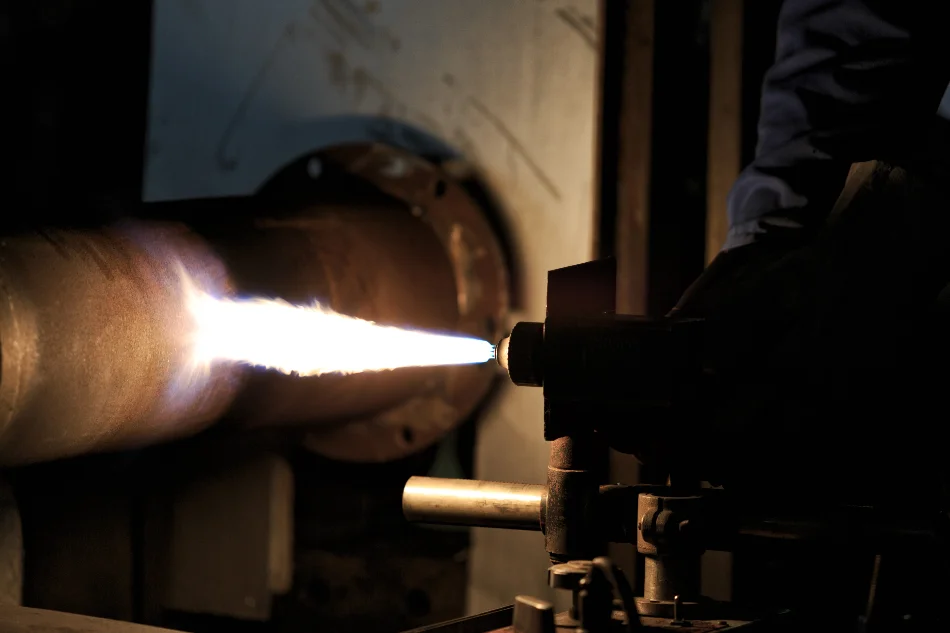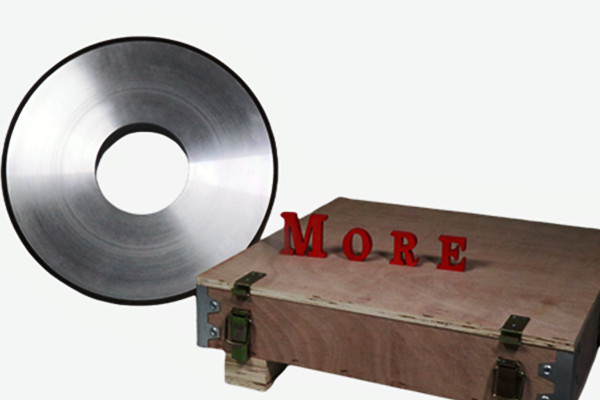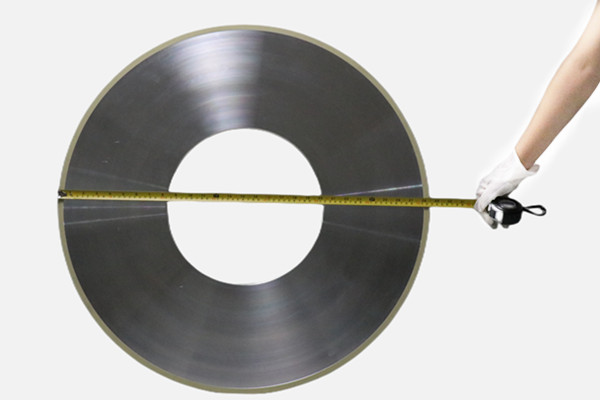How to process thermal spray coating?
What is Thermal Spray?
Thermal spraying techniques consist of a heat source (such as a flame) and a coating material (usually in powder or wire form) that is melted into small droplets and sprayed onto a surface at high velocity. This industrial coating process is also sometimes referred to as “spray welding”.
Thermal spray coatings are typically applied to metal substrates and sometimes to plastic or ceramic substrates. They enhance part performance by providing better wear resistance, corrosion resistance or thermal barrier and are a versatile and effective alternative to other coating methods. For engineering applications, thermal coatings are characterized by their ability to apply metals, cermets, ceramics and polymers with minimal porosity and very high bond strengths without melting or significantly heating the substrate.
Friction and wear is a common phenomenon in nature. Friction is a phenomenon that hinders the relative movement of two mating surfaces due to the interaction between atoms or molecules produced by the contact of micro-regions, and wear refers to the phenomenon that the materials on the two mating surfaces are continuously lost due to relative movement. As long as there is relative motion between the surfaces of objects, friction will inevitably occur, and friction will inevitably be accompanied by wear. The working conditions that can cause wear include sliding, fretting, impact, abrasion, erosion, etc. However, due to the complexity of wear causes and the uncertainty of wear types, the working environment of parts must be clearly analyzed when selecting wear-resistant coatings. The use of thermal spraying technology can increase the wear resistance of soft substrates or substrates that have been worn.
Main Features of Thermal Spray Coatings
Thermal spraying offers options for applying a range of coating materials such as ceramics, metals, alloys, ceramic metals, carbides, polymers and plastics. Thermal spray coatings allow the design and construction of parts using substrate and coating materials that would not be possible with either alone. Thermal spray coatings also allow the use of inexpensive base materials in demanding wear/corrosion applications by “putting” the desired mechanical and corrosion resistance properties on the surface. Thousands of applications in nearly every industry take advantage of the cost-effectiveness of thermal spray technology.
Applying a thermal spray coating to a substrate can give it a specific surface quality that wasn’t there otherwise. Therefore, the overall strength of the part is determined by the base material, while the coating enhances excellent surface qualities such as corrosion resistance, wear resistance and heat resistance.
Thermal spraying process
Explosion spraying
Gases and powders are combined in a controlled explosion and blasted onto components at supersonic speeds. Common materials are tungsten or chromium carbide, metal alloys, ceramics and ceramic metals.
Flame spraying
The process is low cost and can be easily implemented in the workshop or on site. Also known as “Oxygen/Acetylene Combustion Spray”. Oxygen and a fuel gas such as acetylene, propane, or propylene are fed into the lance and ignited to create a flame. Wire or powder can be injected into a flame to melt and then thermally sprayed onto the workpiece. Some materials that can be flame sprayed include stainless steel, nickel, aluminides, Hastelloy, tin, and babbitt (a tin-based alloy), among others.
Arc spraying
During the process, two wires touch each other at the nozzle at the same time. When an electrical load is placed on the wires, it causes the tips of the wires to melt as soon as they make contact. Use an atomizing gas such as air or nitrogen to remove molten material from the wire and move it to the workpiece. Arc spraying is relatively cost-effective and easy to use in the field. Velocity with low particle allows maximum coating thickness for any given material. Materials commonly applied by arc spray include stainless steel, Hastelloy, nickel aluminide, zinc, aluminum, and bronze.
Plasma spraying
Plasma spray is generally considered the most versatile thermal spray process. Throughout the plasma spray operation, gases such as argon and hydrogen are passed through the spray gun. The gas is decomposed and ionized by the electric arc. The atomic components recombine after passing through the nozzle and release a lot of heat. Plasma core temperatures typically exceed 10,000 °C, above the average melting temperature of any material. The powder is injected into the plasma plume, where it is melted and projected onto the workpiece.
Velocity Oxy-Fuel Spraying
The process is relatively new and pushes the range of thermal spray applications into areas that were previously unreachable. In HVOF spraying, a gaseous fuel (such as hydrogen) or liquid fuel (such as kerosene) is mixed with oxygen and burned at high pressure in the combustion chamber of the spray gun. Due to the supersonic velocity of the gas, the powder is injected into the flame and accelerated by heat,’ resulting in very dense coatings by available thermal spraying. The HVOF process is the technology of choice for thermal spraying of wear and corrosion resistant carbides as well as Hastelloy, Tribaloy and Inconel alloys.
Wear-resistant coating after processing
Grinding is the only practical finishing method for wear-resistant coatings. Since the bonding between coating particles mainly depends on mechanical mosaic bonding and contains certain pores, from the point of view of grinding, the heat transfer is relatively slow, and the conventional grinding method of dense materials is not suitable for the grinding of coating materials. processing. If the grinding pressure is too large or the speed is too fast, the particles on the surface of the coating may be transferred or moved, which will cause the particles inside the coating to fall off, and even cause the entire coating to be peeled off from the substrate. The factors that determine the grinding process method include: coating type, workpiece shape, required finish and tolerance, etc.
Generally speaking, the finer the spray powder, the lower the porosity of the coating, the more uniform the coating, and the better the finish after grinding.
Moresuperhard have rich experience on provide grinding and polishing solution for thermal spray industry, we can make 1A1 vitrifird/resin diamond grinding wheel for tungsten carbide coating and other coatings.
When selecting a grinding wheel, factors such as coating type, hardness, workpiece size and shape, grinding amount, surface finish requirements, and grinding machine type should be considered. Generally follow the following principles:
(1) Choose the sharpest grinding wheel as possible, which has a fast cutting speed and is not easy to overheat. The sharpness of the grinding wheel is related to the type and size of the abrasive grains used in the grinding wheel. For grinding wheels for grinding wear-resistant coatings, the commonly used abrasive grains are silicon carbide and diamond. This is because silicon carbide abrasive grains will present new sharp cutting edges after being broken during grinding, while diamond abrasive grains have good durability and can cleanly grind various hard wear-resistant coatings. When the abrasive grain size is small, it not only has a smaller surface area, but also has a sharper cutting edge, which is easier to sink into the interior of the coating than coarse abrasive grains, resulting in a higher finish. Generally speaking, the abrasive grain size for coarse grinding of wear-resistant coating is 125-150 mesh, and the grain size for fine grinding is 380-400 mesh. the
(2) The internal structure and hardness level of the selected grinding wheel should be able to provide the effect of free grinding. The internal structure of the grinding wheel refers to the distance between the abrasive grains inside the grinding wheel. A grinding wheel with a porous structure has a better grinding effect because the gaps between the particles can provide a larger space for debris storage. The different hardness of the grinding wheel will also affect the grinding effect of the wear-resistant coating. The harder grinding wheel has a longer service life than the soft grinding wheel. When the grinding stress is small, the contact area is large and the grinding speed is high, it is recommended to use a softer grinding wheel; when the grinding stress is large, the smoothness is high, the contact area is small and the grinding wheel is narrow, it is recommended to use Harder wheel.
Choose the most suitable grinding wheel bonding type. There are two commonly used grinding wheel binders, vitrified bond diamond grinding wheel and resin bond diamond grinding wheel. The grinding wheel with vitrified bond can withstand high grinding speed and precise fit tolerance, and is not affected by water, acid, oil and temperature changes, but the grinding machine speed is required to be lower than the safe operating speed of the grinding wheel, generally less than 33 m/s. Grinding wheels with resin bonds, on the other hand, can be used for higher grinding speeds and produce higher finishes.
Needle WC wear-resistant coating, the recommended grinding process is as follows:
1) Adopt precision and high-quality grinding equipment.
2) Use water-soluble cooling medium for rinsing.
3) Choose a resin-bonded diamond grinding wheel. When the outer diameter of the workpiece is less than 50mm, use a φ500 grinding wheel; when the outer diameter of the workpiece is greater than 50mm, choose a φ762 grinding wheel.
4) Two-step grinding is adopted, the first step is coarse grinding, and the grinding parameters are: abrasive grain size 125-150 mesh; grinding wheel speed 25-30m/s; workpiece speed 0.3m/s; grinding depth <0.01mm; moving speed 0.2-0.3m/min, longitudinal grinding amount 0.025-0.05mm; second step: fine grinding, the grinding parameters are: abrasive grain size 380-400 mesh; grinding wheel speed 25-30m/ s; workpiece speed 0.5m/s; grinding depth <0.005mm; moving speed 0.05-0.1m/s, longitudinal grinding amount 0.025~0.05mm. the
During the grinding process, the condition of the grinding surface of the grinding wheel will change. After a period of use, either the sand grains on the grinding wheel surface will be worn away, making the height of the abrasive grains equal to the height of the binder, or the grinding wheel surface will be ground Both of these situations will weaken the wearability of the grinding wheel, resulting in more friction (polishing) than grinding. At this time, the grinding wheel should be trimmed or replaced with a new one. When the diamond tool is used to dress the grinding wheel, the traverse speed of the tool through the grinding wheel surface affects the final cutting action of the grinding wheel. Rapid traverse can open the grinding wheel surface and make the abrasive grains sharp again, thereby improving the grinding ability of the grinding wheel; on the contrary, when When the lateral movement is slow, it will cause the surface of the grinding wheel to be closed, passivate the abrasive grains and cause the grinding wheel to harden. For thermal spraying wear-resistant coatings, the slow dressing method is not recommended. Therefore, when using a diamond grinding wheel to grind wear-resistant coatings, it is very important to keep the grinding wheel sharp, which is conducive to obtaining a higher surface finish. the
Wet grinding is generally recommended for grinding wear-resistant coatings, and dry grinding can also be used if suitable protective measures are used. However, the advantages of wet grinding are far greater than dry grinding. When wet grinding, a harder grinding wheel can be used without increasing the incidence of cracking or cracking, minimizing the detachment of surface particles, and the resulting surface finish is better, and the grinding wheel will not be packed quickly. Less trimming is also required. In addition, wet grinding helps to flush away abrasive debris. Filtration and proper concentration of grinding fluid also have an effect on the surface finish.
In short, as long as the grinding process is carefully operated, a wear-resistant coating surface with a good finish can be obtained.
–EDITOR: Doris Hu
—POST: Doris Hu



